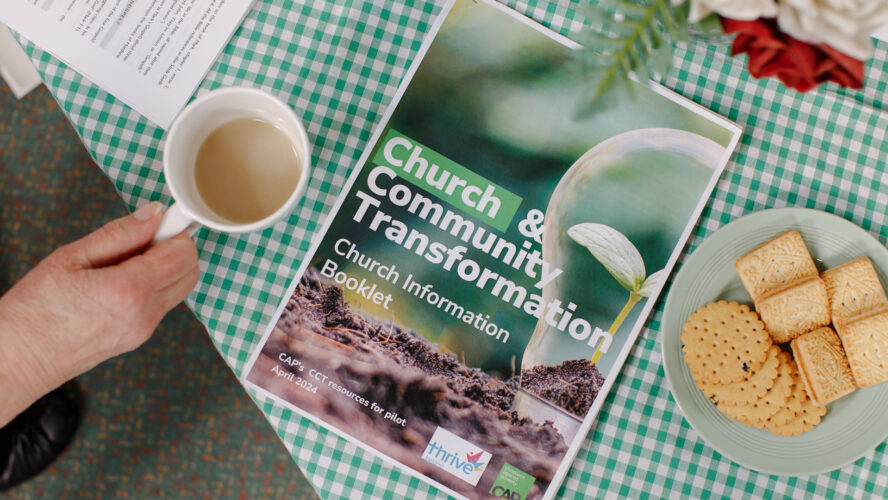
In one way or another, we’ve all been affected by the rising cost of living. But, according to research done by CAP and various other organisations, low-income households are the worst affected. Although public attention seems to have moved away from the issue of poverty recently, it’s more crucial than ever to keep the conversation at the forefront of people’s minds.
Here are five ways the current cost of living is affecting low-income households that we think the headlines should be shouting about.
1. A drop in the rate of inflation doesn’t mean things are getting better for everyone
Inflation is the word used to describe rising prices of goods and services. We hear about inflation a lot, usually that the average rate has gone up or down. But what does that mean?
A drop in the average rate of inflation seems, at first glance, to be positive. However, it doesn’t mean prices have stopped rising. In fact, most things are still getting more expensive, just a bit more slowly than they were before.
It’s generally essential items like food and rent that are rising by significant amounts rather than luxury or high-priced items. This impacts those on the lowest incomes the most. Things aren’t going to be getting much easier because wages and social security are still lagging far behind living costs.
News reports often focus on what the economic situation means for ‘average households’. The problem is, ‘averages’ don’t often give a full picture. When we talk about the ‘average household’, we often overlook the most marginalised. For them, making ends meet every month was incredibly difficult a long time before the cost of living crisis. Prices rising ‘a bit slower’ makes little to no discernible difference. It’s still an impossible situation.
2. The rising cost of essentials is driving people into debt
When it comes to saving money, we know that most low-income households have tried everything. They’ve cut down non-essential spending. They’re choosing the saver brands in the supermarket. They’ve budgeted and budgeted again. But when costs are soaring on items that aren’t optional – like food – they have no choice but to pay the extra cost and break an already unbalanced budget.
More and more households are borrowing money to buy essentials. A YouGov poll commissioned by CAP in July revealed that 28% of UK adults are finding keeping up with bills and credit commitments a heavy burden, and 9% now have debts they don’t know how they will repay. It’s a truth that’s falling tragically under the radar.
Sadie, from south-London, says that rising living costs have completely derailed her journey to becoming debt free.
I had almost cleared my debts, but with rent, food and energy bills all going up, my welfare payments aren’t covering it. I’m back to square one.
3. For low-income households, this winter will be as tough – if not tougher – than the last
From October 2023, the energy price in England, Scotland and Wales* dropped from £2,074 to £1,923, which should in theory mean lower bills this winter. However, energy costs are still considerably higher than they were pre-cost of living crisis.
Although charity campaigners have been urging them to plan ahead all year, the UK Government has admitted it’s unlikely support will be given. In 2022, the Energy Bill Support Scheme provided a £400 energy discount for the vast majority of households, but it seems that won’t be the case this year.
As a result, millions of low-income households run the risk of not being able to afford heating this winter. This provides additional challenges for those who have to pay their energy costs upfront, including prepayment meter customers and those who have to purchase heating oil.
4. The hike in mortgage rates is affecting more than just homeowners
For low-income households living in rented accommodation, the sudden sharp increase in mortgage rates could have a knock-on effect. Many landlords may understandably raise rent to cope with increased costs, ramping up the pressure for those who can barely afford their living costs as it is.
Sadie is terrified of losing her home after her landlord increased her weekly rent by 4%. She lives in a property managed by a housing organisation that provides affordable homes for low-income tenants, but she’s struggling to keep up with the higher payments.
It’s a nightmare thinking that they’re going to come one day and lock my door, and I can’t get in. I’m actually in meltdown each time I think about it. I’m depressed, I’m angry, I’m totally overwhelmed because I don’t want to lose my home.
5. Household income is failing to cover people’s basic needs
As essential costs continue to rise, it’s imperative that household incomes (including social security and wages) keep pace. Right now, they’re not.
In theory, social security (the benefits system) is a public service, available for times when circumstances change, such as when someone loses their job. It should provide sufficient support, but currently 90% of low-income households on Universal Credit are unable to afford essentials including food and fuel, according to the Joseph Rowntree Foundation (JRF).
Alongside JRF and Trussell Trust, CAP is part of the Essentials Guarantee campaign. We want to see social security set at a level where recipients can afford, at a minimum, the essentials they need to survive. As such, we’re calling for the Universal Credit standard allowance to be increased by £30 per week, and uprating to be decided (and regularly reviewed) by independent experts based on the current cost of essential goods and services, and the needs of households.
We also want to see more businesses commit to becoming National Living Wage employers, offering more security and stability for employees and ensuring that life remains affordable for every household.
*The price cap doesn’t apply in Northern Ireland, where prices are set based on a tariff review process.






